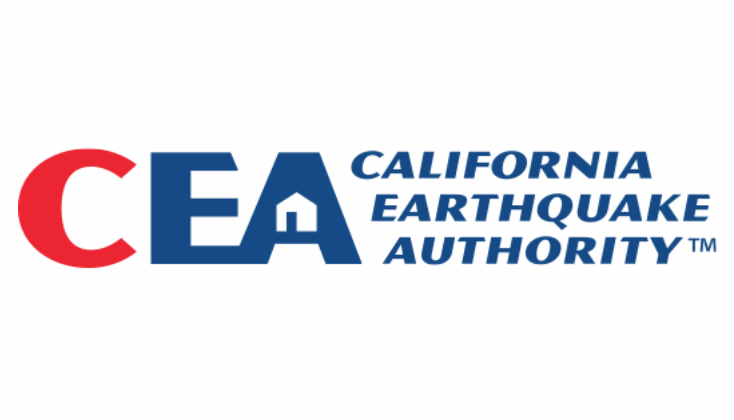CEA Reinsurance Contracts Surge to $7.99 Billion Amid Renewed Market Dynamics
The California Earthquake Authority (CEA) has announced a significant rise in its reinsurance contracts, reaching an impressive $7.99 billion. This surge marks a pivotal moment in the reinsurance sector, signaling major shifts in market dynamics and indicating a reevaluation of strategies in response to emerging risks and market pressures. As non-renewals become more common, stakeholders are forced to reconsider their approach to risk management, reinsurance agreements, and financial stability in an increasingly uncertain environment.
Understanding the CEA’s Reinsurance Surge
Reinsurance is a cornerstone of financial risk management for insurers and public entities alike. The CEA, a government-backed initiative designed to provide earthquake insurance to California homeowners, relies heavily on reinsurance to mitigate the financial burden of major seismic events. In recent years, the CEA has faced growing pressure to secure higher levels of reinsurance due to escalating earthquake risks and the evolving nature of the insurance landscape.
In the most recent renewal cycle, the CEA secured a total of $7.99 billion in reinsurance contracts. This represents a sharp increase from previous years and reflects the changing dynamics in the global reinsurance market. To understand this surge fully, it’s important to explore the factors contributing to this shift, including changes in natural disaster frequency, financial challenges faced by reinsurers, and the increasing role of alternative risk transfer mechanisms.
Key Drivers Behind the Reinsurance Surge
The $7.99 billion surge in reinsurance contracts by the CEA is driven by several key factors:
- Increased Natural Disaster Risks: California’s vulnerability to earthquakes and other natural disasters has heightened in recent years, making reinsurance a critical component of the state’s risk management strategy. As earthquake risk assessment becomes more sophisticated, the CEA has had to scale up its reinsurance coverage to protect against potential catastrophic losses.
- Market Volatility: The global reinsurance market is experiencing volatility, with fluctuating premiums and underwriting capacity. As traditional reinsurers adjust their strategies in response to capital shortages and higher loss expectations, public entities like the CEA are left to navigate an increasingly competitive and unpredictable landscape.
- Non-Renewals and Coverage Gaps: Many reinsurers have opted not to renew existing policies or have significantly raised their prices, due to increasing claims from natural disasters across the globe. These non-renewals have forced the CEA to seek out new partners and alternative solutions to ensure continued coverage for Californians in the event of a major earthquake.
- Changes in Risk Transfer Strategies: With traditional reinsurance becoming less predictable and more expensive, the CEA and other entities are exploring alternative risk transfer mechanisms such as catastrophe bonds, insurance-linked securities (ILS), and other innovative financial products that can help distribute risk more efficiently.
The Role of Alternative Risk Transfer Mechanisms
As the global reinsurance landscape evolves, alternative risk transfer mechanisms have gained prominence. These tools provide innovative ways for public entities like the CEA to manage risk while diversifying their portfolios. The most notable of these are:
- Catastrophe Bonds: Catastrophe bonds, also known as cat bonds, are securities issued by insurers or governments to raise capital that can be used to cover losses from a specified natural disaster event. These bonds have become increasingly popular as a way to transfer risk to the capital markets and provide insurers with access to immediate liquidity in the event of a catastrophe.
- Insurance-Linked Securities (ILS): ILS are a broad category of financial instruments that allow insurers and reinsurers to transfer risk to the capital markets. These securities are often used to cover high-frequency, low-severity events such as earthquakes, providing a much-needed cushion against catastrophic losses.
- Parametric Insurance: Parametric insurance is a type of coverage that pays out a predetermined amount based on the occurrence of specific conditions, such as an earthquake exceeding a certain magnitude. This model allows for quicker payouts and reduces the need for complex loss assessments.
By diversifying its approach to risk management, the CEA is positioning itself to better absorb the financial shockwaves of a major earthquake while ensuring that homeowners remain protected. However, the growing reliance on alternative risk transfer products also presents challenges, including greater complexity in contract design, pricing, and management.
The Growing Challenges for the Reinsurance Sector
The reinsurance market, both globally and in California, is facing a number of challenges that complicate the landscape for entities like the CEA. Some of these challenges include:
- Capital Shortages and Increased Costs: As the frequency and severity of natural disasters increase, reinsurers are under pressure to build their capital reserves. This has led to a rise in the cost of reinsurance premiums, forcing insurers to reconsider their risk profiles and coverage strategies. For public entities like the CEA, this means higher premiums for coverage, leading to the need for more strategic negotiations and partnerships.
- Market Consolidation: The reinsurance sector is experiencing consolidation, with larger firms absorbing smaller players. While this trend may lead to more stability in the market, it also means that fewer reinsurers are available to take on risk. The reduced competition could limit the options available to the CEA and other public entities looking for reinsurance solutions.
- Increased Regulatory Scrutiny: As the stakes in reinsurance rise, regulatory bodies are becoming more involved in overseeing reinsurance contracts and ensuring that these arrangements meet the needs of the insured parties. The CEA, as a government entity, must navigate a complex web of regulatory requirements when securing reinsurance, further complicating the process.
Broader Implications for the Insurance Market
The dramatic increase in the CEA’s reinsurance contracts could have broader implications for the insurance market. As the CEA works to secure greater coverage for Californian homeowners, other states and entities may follow suit, leading to a ripple effect across the reinsurance landscape. This shift could have several outcomes:
- Higher Premiums: As demand for reinsurance rises, reinsurers may pass on the increased costs to primary insurers, leading to higher premiums for consumers. This could result in higher insurance costs for homeowners and businesses, particularly in regions at high risk of natural disasters.
- Innovative Products: To stay competitive, reinsurers may look to innovate and offer new products that cater to the evolving needs of their clients. This could lead to the development of new types of coverage that better address emerging risks, such as climate change, cyber threats, and more frequent natural disasters.
- Increased Focus on Resilience: As the cost of insurance rises, there may be a greater emphasis on building resilience against natural disasters. Homeowners, businesses, and governments may invest more in mitigation measures, such as earthquake-proof infrastructure or flood barriers, to reduce their reliance on insurance and minimize the financial impact of catastrophic events.
Conclusion: A Changing Landscape for Reinsurance
The CEA’s decision to secure nearly $8 billion in reinsurance contracts is a clear reflection of the shifting dynamics in the reinsurance market. As California faces heightened risks from natural disasters, public entities like the CEA are being forced to adapt their risk management strategies and explore new financial instruments to ensure continued protection for residents. However, the challenges posed by market volatility, non-renewals, and rising costs are likely to continue to shape the future of reinsurance in the coming years.
As the reinsurance industry evolves, the integration of alternative risk transfer mechanisms, regulatory oversight, and a renewed focus on resilience will be key to navigating the complexities of the modern insurance market. For now, the CEA’s $7.99 billion reinsurance contracts stand as a testament to the sector’s ability to adapt and evolve in response to an ever-changing risk landscape.
For more information on the latest trends in reinsurance, visit Reinsurance News.
Learn more about the CEA’s role and earthquake risk management strategies at California Earthquake Authority.
See more CNBC Network



